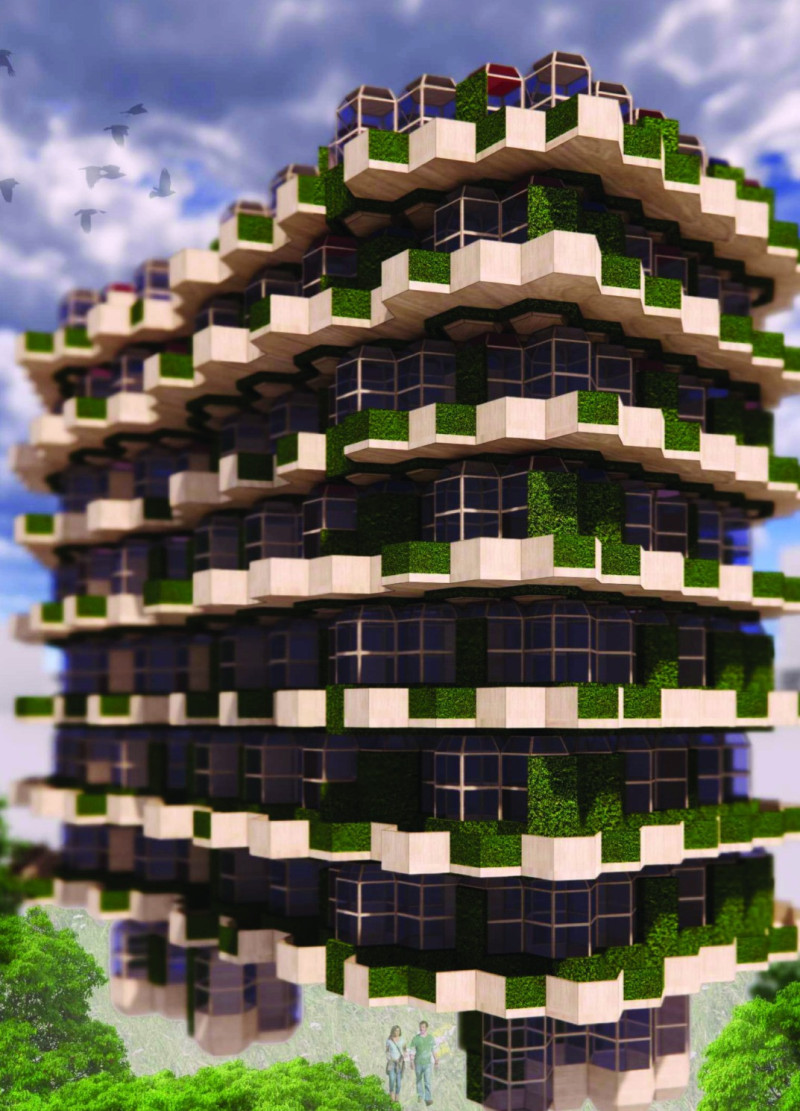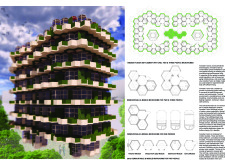5 key facts about this project
The Amoeba Fusion Settlement introduces a fresh perspective on micro-living, designed to meet the needs of contemporary lifestyles. Located in an area that supports sustainable practices, the project includes one, two, and three-person microhomes aimed at addressing issues such as rising population density and limited resources. The design centers on decentralization and self-sufficiency, providing a framework for resilient living that integrates closely with its surroundings.
Design Concept
Decentralization is a central theme in the settlement's design. Each microhome is independent and does not rely on centralized systems, promoting off-grid living. This approach accommodates the diverse needs of occupants while tackling modern urban challenges. It creates a living environment that encourages both privacy and community, making the homes adaptable to various lifestyles.
Modularity and Adaptability
Modular design plays a vital role in the layout of the microhomes. Each unit contains essential modules, including kitchens, bathrooms, and versatile sleep-work-play areas. The sleep-work-play module can easily change its function, serving as a workspace, bedroom, or recreational space when needed. This flexibility makes efficient use of limited space, catering to the varied demands of its inhabitants.
Community Integration
The design fosters connections among residents through the arrangement of microhomes around communal courtyards linked by vertical cores. This setup encourages social interaction and helps build a sense of community. By clustering the homes, it promotes direct contact between neighbors, reinforcing bonds and engagement among those living in the settlement.
Sustainability Features
Amoeba Fusion incorporates features aimed at sustainability. The settlement uses an off-grid micro-grid system that relies on renewable energy sources. Each home is designed with energy efficiency in mind, evident in elements like tapered roofs that allow natural light to enter and solar panels that generate power. Additional features such as water storage solutions and energy-efficient ventilation support the project's commitment to environmental responsibility.
Solar panels sit atop the microhomes, capturing renewable energy while the sloped roofs enhance daylight within the interiors. Each unit remains bright and functional, reducing the need for artificial lighting and further promoting an environmentally friendly lifestyle.



















































